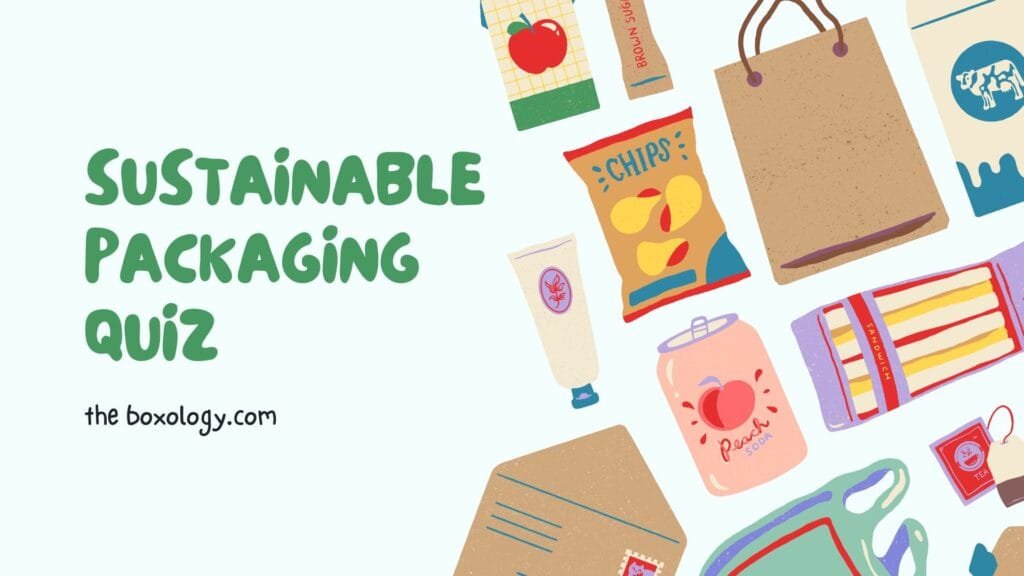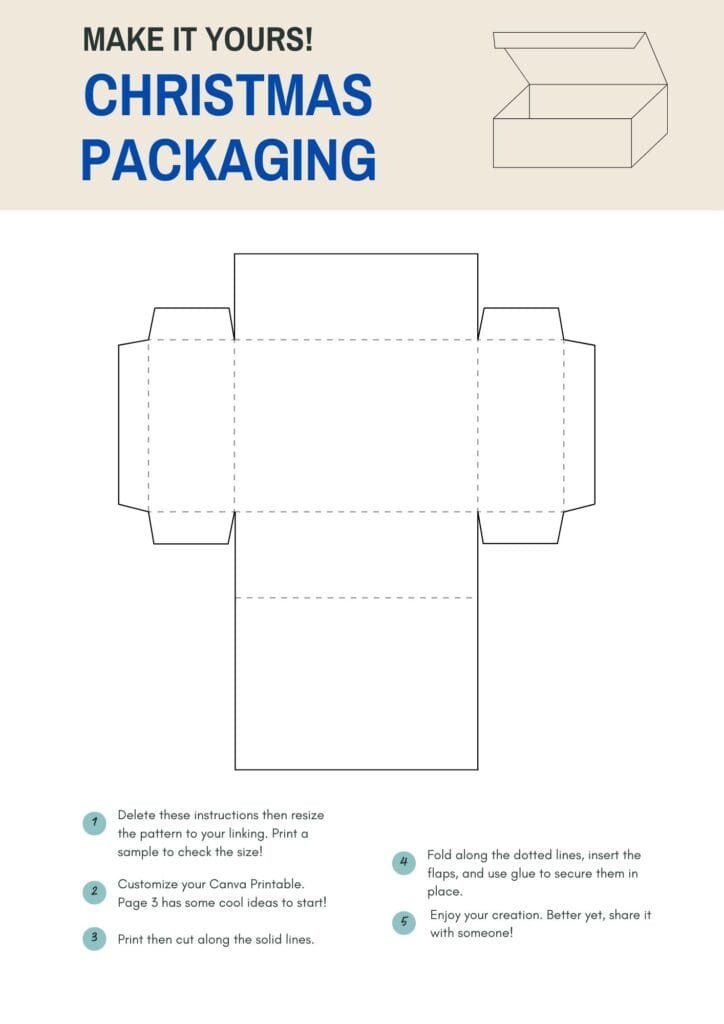Table of Contents
- Introduction: What is Biodegradable Packaging?
- Why Biodegradable Packaging Matters in 2025
- 7 Game-Changing Benefits of Biodegradable Packaging
- How TheBoxology Implements Biodegradable Packaging
- Types of Biodegradable Packaging Materials
- Challenges in Biodegradable Packaging
- FAQs About Biodegradable Packaging
- Conclusion: The Future is Biodegradable

🌿 Introduction: What is Biodegradable Packaging?
Biodegradable packaging refers to materials that decompose naturally with the help of microorganisms, leaving no toxic residue. Unlike traditional plastic or synthetic materials, biodegradable packaging offers an eco-friendly solution that aligns with the growing demand for sustainable living.
In 2025, biodegradable packaging isn’t just a trend—it’s a global necessity. Whether it’s custom boxes for beverages or corrugated shipping containers, brands are actively transitioning toward eco-conscious packaging options.
♻️ Why Biodegradable Packaging Matters in 2025
In a world grappling with climate change, overflowing landfills, and plastic-choked oceans, biodegradable packaging emerges as a beacon of hope. Governments are enforcing stricter environmental regulations, and consumers are demanding ethical practices.
At TheBoxology.com, we understand the pulse of modern eCommerce. That’s why we’ve incorporated biodegradable packaging into our premium product lines, including custom boxes and luxury eco-boxes.
Key Stats:
- Over 380 million tons of plastic are produced annually, with only 9% being recycled.
- A biodegradable box decomposes in just 3 to 6 months, compared to 500+ years for plastic.
- 81% of global consumers want brands to be more sustainable.
🔥 7 Game-Changing Benefits of Biodegradable Packaging
1. Reduces Environmental Pollution
Unlike plastic, biodegradable packaging doesn’t pollute soil or waterways. It breaks down into natural elements, benefiting ecosystems.
2. Enhances Brand Reputation
Consumers associate eco-packaging with responsible branding. Using biodegradable packaging boosts customer loyalty and brand trust.
3. Cost-Efficient in the Long Run
Although initial costs may be higher, biodegradable packaging minimizes waste management expenses and carbon taxes in the long run.
4. Supports Circular Economy
It aligns with the circular economy model, where products are reused, recycled, or safely returned to the environment.
5. Customizable & Versatile
From biodegradable custom boxes to eco-mailers, the design options are limitless.
6. Complies with Global Regulations
Many countries now require sustainable packaging. Using biodegradable packaging helps your business stay compliant.
7. Biodegradable Doesn’t Mean Weak
Modern biodegradable packaging is strong, durable, and water-resistant—ideal for shipping anything from cosmetics to tech.
📦 How TheBoxology Implements Biodegradable Packaging
At TheBoxology, we’re redefining custom biodegradeable packaging with a green twist. Our innovation-driven team has rolled out:
- Biodegradable packaging mailer bags
- Custom corrugated biodegradable boxes
- Recyclable and compostable product wraps
- Water-based ink printing for all box designs
We’ve also partnered with EcoEnclose and NoIssue to ensure all our packaging materials are certified biodegradable and compostable.
Explore Our Biodegradable Box Collection 🔗

🌾 Types of Biodegradable Packaging Materials
1. Plant-Based Plastics (PLA)
Derived from corn starch or sugarcane, PLA offers transparency and durability, perfect for food and cosmetic biodegradable packaging.
2. Mushroom biodegradable packaging
Biodegradable packaging Made from agricultural waste and mycelium (fungus roots), it’s strong and compostable.
3. Paper & Cardboard biodegradable packaging
Classic yet highly effective—biodegradable packaging cardboard boxes are staples at TheBoxology.
4. Seaweed biodegradable packaging
An emerging favorite, seaweed and biodegradable packaging packaging is not just biodegradable but also edible in some forms!
5. Compostable Polymers biodegradable packaging
Used for shipping mailers, these materials decompose within 180 days under composting conditions.
⚠️ Challenges in Biodegradable Packaging
- Cost: Sustainable materials can cost 20–30% more.
- Availability: Some raw materials aren’t locally accessible.
- Decomposition Conditions: Some materials require industrial composting.
- Consumer Awareness: Misconceptions still exist around what “biodegradable” truly means.
TheBoxology tackles these challenges with supplier partnerships and public education through blog articles like this one.
❓ FAQs About Biodegradable Packaging
Q1: Is biodegradable packaging really better than plastic?
Yes. Biodegradable packaging decomposes naturally, whereas plastic remains for centuries, causing environmental harm.
Q2: Can I customize biodegradable packaging for my brand?
Absolutely! At TheBoxology, we offer fully customizable biodegradable custom boxes, inserts, and labels.
Q3: How long does it take to decompose?
Depending on the material, biodegradable packaging can decompose within 3 to 6 months.
Q4: Is it safe for food and cosmetics?
Yes, we use food-grade biodegradable packaging that meets FDA and EU safety standards.
Q5: Is biodegradable packaging the same as compostable?
Not exactly. All compostable packaging is biodegradable, but not all biodegradable materials are compostable under home conditions.
🌍 Conclusion: The Future is Biodegradable
In a planet-first economy, biodegradable packaging isn’t just an option—it’s an obligation. It’s better for the environment, improves brand image, and prepares businesses for stricter eco-regulations.
At TheBoxology, we don’t just sell boxes. We offer sustainable packaging solutions that align with tomorrow’s ethical standards. Whether you’re a small business or a large enterprise, switching to biodegradable packaging is a smart, responsible, and future-ready move.
✅ Inbound Links
🌐 Outbound Links
- EcoEnclose – Sustainable Packaging Partner
- Biodegradable Packaging Explained – EPA
- NoIssue – Custom Compostable Packaging
📊 Biodegradable packaging vs Traditional Packaging: A Practical Comparison
| Feature / Factor | Biodegradable Packaging | Plastic Packaging | Styrofoam Packaging |
|---|---|---|---|
| Material Source | Plant-based, organic waste (e.g. cornstarch, mushroom) | Petroleum-based synthetic polymers | Petroleum-based foam |
| Decomposition Time | 3–6 months (under composting conditions) | 500+ years | 500+ years |
| Recyclability | Often compostable or recyclable | Sometimes recyclable (varies by type) | Rarely recyclable |
| Environmental Impact | Low — breaks down naturally, no toxic residue | High — persistent microplastic pollution | Very high — causes land and marine pollution |
| Durability | Moderate to High — improves with material blends | High — especially for shipping and waterproof uses | High — fragile under pressure, breaks easily |
| Cost (per unit) | Slightly higher (10–30% more than plastic) | Lower (widely available and mass-produced) | Moderate (but declining due to regulations) |
| Consumer Perception | Very Positive — seen as ethical and modern | Negative — associated with pollution and waste | Very Negative — banned in many regions |
| Business Examples | TheBoxology, Lush, IKEA, Dell, Just Water | Most legacy FMCGs and shipping companies | Older packaging for electronics and takeaways |
| Government Regulations | Incentivized with subsidies, often preferred in green laws | Increasingly regulated and penalized | Banned or restricted in over 100 countries |
| Shipping Performance | Good — water-resistant, shock-absorbent options available | Excellent — waterproof, lightweight | Good — lightweight but easily damaged |
.
🌍 Real-World Examples of Biodegradable Packaging in Action
1. Lush Cosmetics: Naked & Biodegradable Innovations
Lush, the UK-based cosmetics brand, is a trailblazer in sustainable packaging. They’ve introduced “naked products” like shampoos and soaps that require no packaging at all. For items that do need protection, Lush uses biodegradable packaging peanuts made from corn starch, which dissolve in water. These eco-friendly alternatives replace styrofoam and are completely compostable. Lush has proven that biodegradable packaging can be both stylish and effective in the beauty industry.
2. Dell: Mushroom-Based Packaging for Electronics
Tech giant Dell has embraced mushroom packaging as an alternative to plastic foam for cushioning electronics. This innovative biodegradable packaging is created by growing mycelium (fungus roots) around agricultural waste to form a strong, compostable material. Dell’s mushroom packaging decomposes in just 30 days when composted. This shift reflects a growing movement in the tech sector to reduce environmental impact while maintaining protective standards for fragile items.
3. TheBoxology.com: Biodegradable Boxes for Custom Orders
At TheBoxology, biodegradable packaging isn’t just an idea—it’s the backbone of their product philosophy. From custom beverage boxes to eco-friendly luxury packaging, all boxes are made using FSC-certified cardboard, printed with water-based inks, and sealed using biodegradable tape. Even the void fillers inside the boxes are made of biodegradable cornstarch peanuts or shredded kraft paper. This reflects a complete and practical adoption of biodegradable packaging that meets both eCommerce and aesthetic standards.
4. Just Water: Paper-Based Bottles for a Plastic-Free Future
Co-founded by Jaden Smith, Just Water uses a bottle made of 82% renewable resources, including paper and plant-based plastic. The cap and shoulder are derived from sugarcane, making the entire bottle recyclable and biodegradable packaging under the right conditions. This approach drastically reduces plastic waste and carbon emissions, offering a viable solution in the bottled beverage industry—a sector traditionally reliant on harmful PET plastics.
5. IKEA: Reducing Waste with Biodegradable Alternatives
IKEA is actively replacing its traditional polystyrene packaging with molded pulp and mushroom-based solutions. The company aims to be climate positive by 2030, and biodegradable packaging plays a major role in this transformation. IKEA’s global supply chain now incorporates sustainable materials for both primary and secondary packaging, drastically cutting down on non-recyclable plastic across thousands of product lines.
These real-world examples show that biodegradable packaging is no longer a future concept—it’s a practical, profitable, and scalable solution already in use. From cosmetics to electronics, beverages to furniture, companies around the world are proving that sustainability and functionality can go hand in hand.















